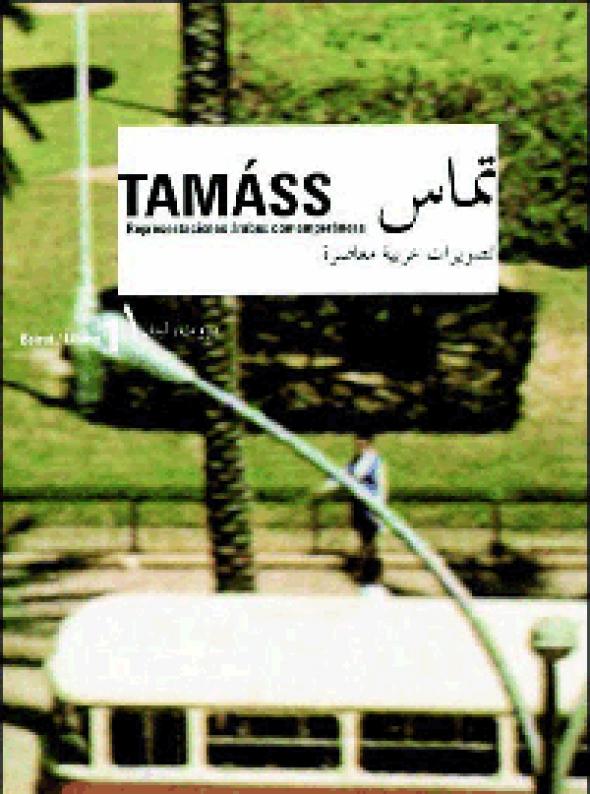Tamass: Contemporary Arab Representation
Zoe Young explores post-war issues in the Middle East
In 1996, a family of squatters died, demolished along with their Beirut home by the private company reconstructing the post-war city.
‘There’s nothing here, no McDonalds or anything,’ said a US soldier six years later, heading for Baghdad past Uruk, site of the first city. Another: ‘Me and my boys are going to take a bite out of Iraq’. Some say West Asian (Middle Eastern) protests against this invasion reflect the Ummah, the body of Islamic believers, ‘manifesting her deep feeling for a part of her body, which is in the process of being severed’, as Yusuf Patel described it on Khalifa.com, to be subsequently quoted by Jonathan Raban in The Guardian.
Do cities like Beirut spawn ghost stories as catharsis? After war, what is ‘private’, or ‘public’, ‘pure’, or ‘defiled’? Do ruins attract vampires, themselves ruined? Seeking sustainability, do vampires perceive ruinous potential even in what remains intact…?
Explorations of such ‘complex dimensions of aesthetics in relation to social and political situations’ appear in Tamáss – Contemporary Arab Representations – in which Lebanese artists and architects propagate ‘an experimental, critical Arab culture.’
Tamáss echoes Gödel’s theorem: ‘no theories, no forms … can be up to the phenomenological complexity of contemporary Beirut’; something similar is true of all globalising cities, from Los Angeles’s segregated dream factories to occupied Baghdad. Like military, religious or corporate strategists, intellectuals conceptually map as they observe. And like the post-war planners’ remaking of central Beirut as ‘a laboratory for current and future elaborations of global capitalism’, artists too leave blank areas beyond care, co-option or comprehension.
At the end of Beirut’s latest war in 1990, the state was colonised by capital, and a newly delineated city centre given to a private company for reconstruction – via demolition of more than half the intact buildings. Social exclusion and political repression now sustain a ‘global’ commercial centre focussed on banks, expensive bars and ‘civilised’ roads to the airport. Marginalising unprofitable local history, places, people, the company mounts posters around its territory declaring, ‘Beirut is yours: ask about it.’

A laboratory is where people exercise power to create fact through experiments with disembedded elements of the world. Military, legal and economic installations can disembed space and wealth from their contexts; the resulting cityscapes are as unsettling as the extraction, consumption and evacuation they embody.
As I write, the US is about to declare victory in Iraq, while Burger King has crossed borders blocked to essential aid. Baghdad’s ‘reconstruction’ may be just another lantern show in Plato’s cave, phantasmagoria like Hollywood’s myths made in a City of Quartz, the bites taken out of Beirut, the sickly optimism of capitalist culture denying its roots in human labour, division and pain. Perhaps through Tam·ss and beyond, Iraqi artists, mappers and installers may tell their sides of this story too.

Tamass: Contemporary Arab Representation, issue 1 // Fundacio Antoni Tapies, Barcelona // 2001 // ISBN 84-88786-61-1 // $30
Tamass 1 is related to a conference entitled ‘Contemporary Arab Representation’, which was first held at the Universida de Andalucia, and then at Witte de With, Rotterdam. See [http://www.wdw.nl/ENG/text/projects/arab/fr_arab.htm]
Mute Books Orders
For Mute Books distribution contact Anagram Books
contact@anagrambooks.com
For online purchases visit anagrambooks.com








